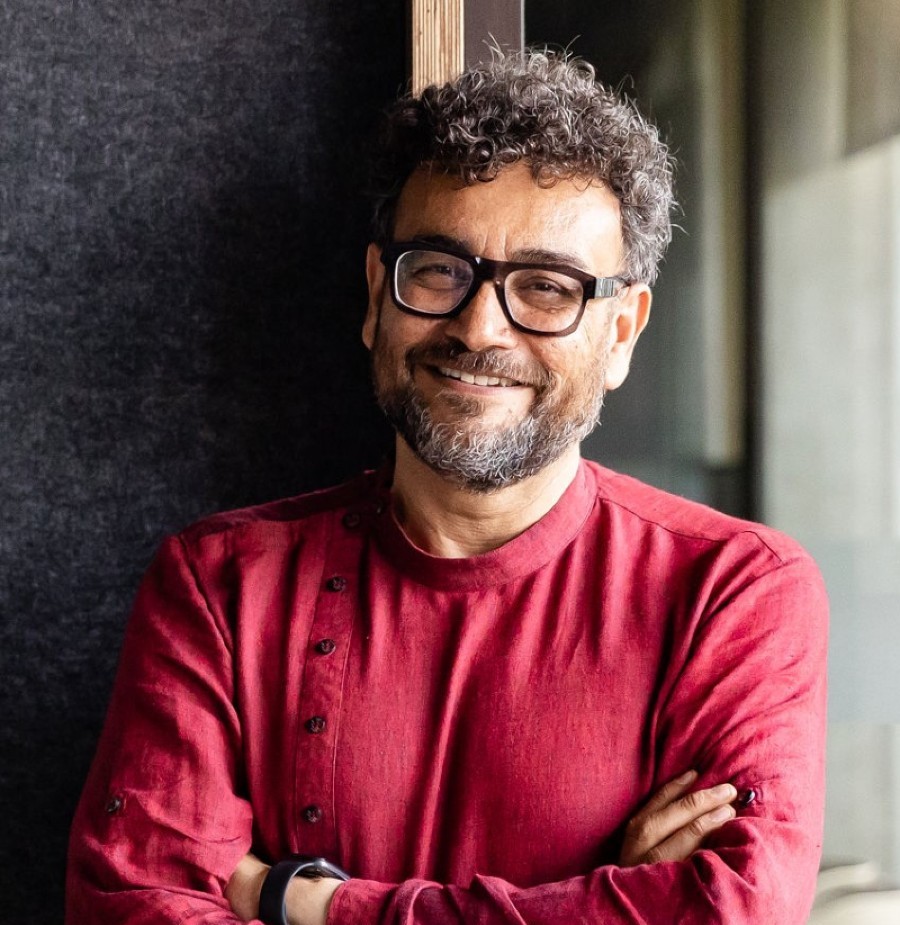Could you elaborate on how the integration of various elements can enhance the overall performance of steel structures, especially in the Indian context?
Anything that guides our creative thought processes attracts me. For instance, when I think of forms that are more flexible, fluid, and lighter than steel, I find them especially appealing. Steel, as a material, offers significant flexibility and versatility. It comes in solids, various forms, and even sheets that can be folded. One can utilise steel’s best properties, such as tensile strength and elasticity, along with its flexibility to be perforated, bent, welded, and more. The greatest advantage of steel is the comfort of selecting it for pre-engineered structures, which is a key benefit over concrete. With steel, you can execute entire buildings off-site in a factory. And in today’s world, efficient time and site management are crucial, especially given the challenges with on-site labour and manpower requirements.
I would also like to emphasise that steel structures serve as the fundamental framework of a building, much like the bones of a body. However, they also need to be complemented by other elements such as glazing, sound insulation, and thermal insulation. While steel structures provide essential support, they must be integrated with these additional components to truly shine. This approach has been well-explored in colder European countries. I hope it becomes more widely adopted in India as well, where we need to focus on the workmanship of pre-engineered structures to address thermal and sound insulation. With this integration, we can achieve greater success in our building designs.
Can you share any specific examples of how you have used steel in your designs or projects?
For instance, one of the corporate houses we designed, called Nyati Unitree, which is the corporate headquarters of the Nyati Group, features a very special facade. Initially, we considered using a concrete structure, but we wanted a facade that would be more dynamic, incorporating extended terraces as breakout zones for the offices inside. The site’s unusual shape posed a challenge, but steel provided us with a wraparound structure that was essential in supporting the extended cantilever terraces. This approach also allowed us to create a play within the steel frames, including projected balconies with cutouts and various other design elements. We added a sculptural bracketing element and a tree-like structure that not only enhances the aesthetic of the building but also serves a functional purpose, supporting the extended RCC terraces.
Are there any architects or architectural projects that have inspired your interest in steel design?
Among the many architects and engineers worldwide, Santiago Calatrava is the first who comes to mind. He is one of the best engineers and architects out there. But he is also like a sculptor, creating truly amazing works. His work sets a benchmark for how steel can be used effectively. His projects are not only creative but they also meet functionality, transforming into lifelong public art for people to enjoy in our modern times.
In what ways does designing with steel impact construction timelines and costs compared to other materials?
The cost of steel may be higher compared to concrete, but this is offset by the time saved and the ability to recycle the material. In the long run, it becomes more economical. Moreover, steel allows for space-saving due to its lighter sections and offers greater flexibility for altering structures as needed, all while saving time.
How do you stay updated on the latest developments and trends in steel-based architecture and design?
Attending conferences is a great opportunity to be exposed to different speakers, participate in discussions, and engage in Q&A sessions. While digital media is readily available and keeps us informed, for me, it is the nature-inspired structures that stand out. The designs we see today often draw from forms that have existed in nature for centuries. We simply adapt these natural designs and bring them to life in service of humanity.
What challenges have you encountered when working with steel in your architectural projects, and how did you address them?
The first challenge we encounter is the quality of workmanship and the processes we need to implement. These are not necessarily challenges, but rather reflections of an industry that is still growing and evolving. As designers, we notice a gap between the engineering and design fields that need to be bridged. For example, we use BIM software, and I wish more steel structural engineers would adopt it. I have not yet come across many who use BIM in tandem with design and structural processes. If we can achieve this integration, it would save a lot of time and materials, and also boost our confidence in using steel more effectively.
What is your opinion on the future of steel in architecture, considering emerging technologies and sustainability trends?
I believe the future belongs to technology that will enable us to create structures that are lighter, faster, and more precise. Any material that advances in service to humanity will have a significant impact. For instance, as I give this interview, the camera is supported by a steel frame, which is one of the most elegant and flexible structures available. It combines stability with a lightweight design, capable of supporting a heavy camera while maintaining a high level of functionality.
The same principles apply to building structures. I am confident that steel has a bright future if it is properly adapted to engineering needs. In India, the industry is growing, and if we look abroad, many steel structures are well-engineered, alongside concrete structures. Each material has its advantages and disadvantages, but with proper management, steel offers significant benefits, including time savings and sustainability.
Are there any specific projects or areas within the steel construction industry that you hope to explore in the future?
We often find that steel is a material we can effectively use, especially in urban scenarios. I believe that steel will soon surpass concrete due to its versatility and the reduced on-site work required. Therefore, for any structure we design, steel will be a top priority, provided that pre-engineered structures are integrated into the design process from the very beginning.





